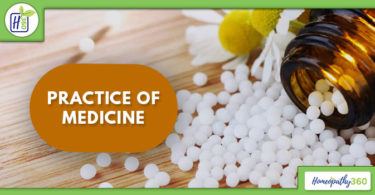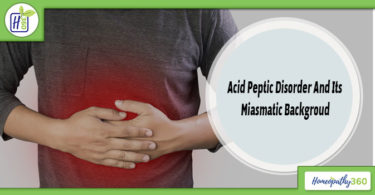About the authors
Dr. S. N. Sharma; MD (Hom.),P.G.H.H.M., Masters degree in clinical Psychology. Asst. Professor. Dr. Madan Pratap Khunteta homoeopathic medical college, & research centre, Jaipur
Dr. Laxman Verma; PG Scholar. Dr. Madan Pratap Khunteta homoeopathic medical college, & research centre, Jaipur
Dr. Pragya Sharma; CRRI. Dr. Madan Pratap Khunteta homoeopathic medical college, & research centre, Jaipur
Dr. Bhupendra Arya ; PG Scholar. Dr. Madan Pratap Khunteta homoeopathic medical college, & research centre, Jaipur
Abstract
Dermatology is a broad specialty with thousand of different skin diseases. In the case taking, location, sensation, modalities, concomitant, extension, duration, history of onset should be carefully noted. Description of the lesion should be made in proper descriptive terms to avoid confusion. For selection of homoeopathic similimum, causations and Miasms are very important to treat dermatological disorders.
Kew words
Dermatology, Homoeopathy, Miasm, Urticaria, Dermatitis, Hair loss.
Introduction
Dermatological disorders are the diseases of the largest organ of our body, i.e., Skin. These may vary from the simplest lesion limited to the organ only to a vivid presentation depicting a complex picture of some serious systemic disorder. The clinical features of skin lesions are related to the underlying pathological processes. Skin conditions broadly fall into three clinical groups.
- Those with a well-defined appearance and distribution.
- Those with a characteristic pattern but with a variety of underlying clinical conditions.
- Those with a variable presentation and no constant association with underlying conditions.
Skin lesions may be the presenting feature of serious systemic disease, and a significant proportion of skin conditions threaten the health, well-being and even the life of the patient. Clinical descriptive terms such as macule, papule, nodule, plaque, indurations, atrophy, bulla and erythema relate to what is observed at the skin surface and reflect the pathological processes underlying the affected skin.
The significance of morphology and distribution of skin lesions. Dermatology is a broad specialty with over 2000 different skin diseases, the most common of which are introduced here. Pattern recognition is key to successful history-taking and examination of the skin by experts, usually without the need for complex investigations. However, for those with less dermatological experience, working from first principles can go a long way in determining the diagnosis and management of patients with less severe skin disease.
Although dermatology is a clinically orientated subject, an understanding of the cellular changes underlying the skin disease can give helpful insights into the pathological processes. This understanding aids the interpretation of clinical signs and overall management of cutaneous disease. Skin biopsies can be a useful adjuvant to reaching a diagnosis; however, clinic-pathological correlation is essential in order that interpretation of the clinical and pathological patterns is put into the context of the patient. A holistic approach in dermatology is essential as cutaneous eruptions may be the first indicator of an underlying internal disease. (1)
Following points should be Included during Case taking of dermatological disorder. (1)
- Where: – site of lesion.
- How long: – continuous or intermittent.
- Trend: – better or worse?
- Who else: – family member / work colleagues / other skin condition?
- Symptoms: – itching, burning, scaling, or blisters?
- Any medication or other illness.(1)
Descriptive terms (1)
- Macule: – change in color without any elevation above the surface of the surrounding skin.
- Papules and nodules: -raised lesion, of dermal or epidermal origin.
- Papule: – 0.5 to 1.0 cm in diameter.
- Nodule: – greater than 1.0 cm in diameter.
A vascular papule or nodule is known as a hamangima.
- Vesicles and bullae: – raised lesion that contain clear fluid (blisters)
- Bulla: – vesicle larger than 0.5 cm superficial within the epidermis or situated in the dermis below.
- Lichenification: – hard thickening of the skin with accentuated skin markings, it’s due to chronic inflammation and scrubbing of the skin.
- Discoid lesion: – coin shaped lesion.
- Pustules: – lesion containing purulent material due to infection.
- Atrophy: – loss of tissue. Affect epidermis, dermis or subcutaneous fat.
- Ulceration: – loss of the whole thickness of the epidermis and upper dermis.
- Erosion: – superficial loss of epidermis that generally heals without scarring.
- Excoriation: – partial or complete loss of epidermis as a result of scratching.
- Fissuring: – slits through the whole thickness of the skin.
- desquamation: – peeling of superficial scales with acute inflammation.
- Anular lesion: – ring shaped leasion.
- Raticulate: – net like appearance. Subcutaneous blood vessels become visible.
Some dermatological disorder
- Hair loss or alopecia
Hair loss or alopecia can be divided into scarring and non-scarring types depending on the underlying pathological process, and these can then be further categorized according to distribution, either diffuse or localized.(1)
- Urticaria: – Urticaria describes transient pururitic swellings of the skin, often referred to as wheals, hives or nettle rash by the patient. Urticaria results from oedema in the superficial layers of the skin causing well-demarcated erythematous lesions. It may be associated with allergic reactions, infections or physical stimuli, but in most patients no cause can be found. Similar lesions may precede or be associated with vasculitis (urticarial vasculitis), pemphigoid or dermatitis herpetiformis.(1)
- Atopic dermatitis: – It is the cutaneous expression of the atopic state, characterized by a family history of asthma, allergic rhinitis or eczema. The etiology of AD is only partially defied, but there is a clear genetic predisposition.(2)
- Eczema(2)
Eczema is classified broadly into endogenous (constitutional) and exogenous (induced by an external factor).
- Endogenous eczema
AD typically presents in infancy or early childhood, initially with facial and subsequently flexural limb involvement. AD is intensely itchy and even young babies
Become highly proficient at scratching, which can lead to disrupted sleep (both patient and family), poor feeding and irritability. The usual pattern is one of flare-ups followed by remissions, exacerbations being associated with inter-current infections, teething, and food allergies. In severely affected babies failure to thrive may result. In older children or adults, AD may become chronic and widespread and is frequently exacerbated by stress.
- Exogenous eczema
Contact dermatitis
Contact dermatitis can result from irritant or allergic reactions in the skin. Cutaneous contact allergy is not inherent but acquired because of exposure to environmental or occupational allergens. In general, the more a person is exposed to a potential allergen (quantity and frequency) the more likely he or she is to develop an allergy. Patients with abnormal skin barrier function (e.g. those with eczema) are more likely to develop contact dermatitis and suffer from irritant reactions than those with normal skin.
- Acne: – It is self limited disorder primarily of teenagers and young adults, 10-20 yrs. Of adults. May continue to experience some form of the disorder. The permissive factor for the expression of the disease in adolescence is the increase in sebum production by sebaceous gland after puberty. Small cysts, called comedones form in hair follicles due to blockage of the follicular orifice by retention of keratinous material and sebum.(2)
- Psoriasis: – It is one of the most common dermatologic diseases, affecting up to 2% of the world’s population. It is an immune mediated disease. Clinically characterized by erythematous, sharply demarcated papules and rounded plaques covered by silvery micaceous scale. The most common Varity of psoriasis is called plaque- type. (2)
Homoeopathic view (3)
- Law of causation:-
- Predisposing factor: – it is responsible for producing disease where organism become prone to disease or incline to disease.
- Exciting cause: – accordingto aphorism 5 Organon of medicine causes responsible for acute disease. As in aphorism 72 acute diseases are, the diseases to which man is libel are either rapid morbid processes of the abnormally deranged vital force, which have a tendency to finish their course more or less quickly, but always in a moderate time- these are termed acute disease.
- Fundamental cause: – according to aphorism 5 Organon of medicine fundamental cause responsible to chronic type of disease. Many factors are included in fundamental cause. But chronic diseases are produces generally due to chronic Miasm. I.e. Psora, Syphilis, Sycosis in aphorism 79 the syphilis and sycosis with their primary manifestation. Those are chancre like ulceration on the genital and cauliflower like growth in skin. And Psora is denoted by eruption with voluptuous itching. Beside syphilis and sycosis, Psora is the mother couse of all type miasmatic disease.
- maintaining cause:- that cause responsible for maintaining the disease condition and produces and responsible for pseudochronic disease according to aphorism 77 those diseases are inappropriately named chronic, which persons incur who expose themselves continually to avoidable noxious influences, who are in the habit of indulging in injurious liquors or aliments, are addicted to dissipation of many kinds which undermine the health, who undergo prolonged abstinence from things that are necessary for the support of life, who reside in unhealthy localities, especially marshy districts, who are housed in cellars or other confined dwellings, who are deprived of exercise or of open air, who ruin their health by overexertion of body or mind, who live in a constant state of worry, &c. these states of ill-health, which persons bring upon themselves, disappear spontaneously, provided no chronic Miasm lurks in the body, under an improved mode of living, and they cannot be called chronic diseases.
- Miasm and symptoms with medicine.
- Psora(4)
- Dirty, dry harsh skin.
- Itching without pus or discharge.
- Cracks of hands and feet.
- Unhealthy skin with itching and burning.
- Physical weakness.
- Morning time aggravation.
Medicine: – sulphur, psorinum, phosphorus, aconitum napellus, arenicum album.
- Sycosis(4)
- Overgrowth.
- Small reddish, flat vesicular eruption.
- Purulent discharges.
- Herpes, erysipelas, all sorts of warts and excrescences.
- Post operative scare tumors.
- Nails: irregular, thick, pale, stitching pains and sensitiveness.
- Oily skin.
- Confused.
- Day time aggravation.
Medicine:-thuja occidentalis, medorrinum, Sabina, alumina, bryonia alba.
- Syphilis(4)
- All sorts of ulcer.
- Ulcer and putrefaction of all tissues but devoid of pain and itching.
- Leprosy in which liquefaction has already started but syphilis is predominating.
- Copper colored eruption, which do not heel fast, but turn to ulceration and the discomfort is agg. at night; and by warmth of bed.
- Nails: spoon shaped and paper like thin nails with bending, tearing easily.
- Boils, carbuncles, ulcers with offensive discharges.
- Malignant dyscrasias; gangrenes of the skin, dry gangrene.
- Putridity and offensiveness from all discharge.
Medicine: – siphilinum, mercury’s, acid’s, lyssinum, pyrogenium.
CONCLUSION
We can conclude that selection of similimum in Homoeopathy is based on the underlying cause and miasms. Miasms can be present individually or in combination in the same patient with one or the other dominating over the other. Anti-miasmatic medicines can be given as per the presenting totality of the patient. Miasmatic background of the disease is also very important for forming the totality.
REFERENCES
- Morris-Jones R. ABC of dermatology. 6th ed. London, UK;.
- harrison’s principles of internal medicine. 19th ed. mc grow hill; 2019.
- Hahnemann S, Dudgeon R, Boericke W. Organon of medicine. New Delhi, India: B. Jain; 2005.
- Banerjea S. Miasmatic diagnosis. New Delhi: B. Jain; 2004..





